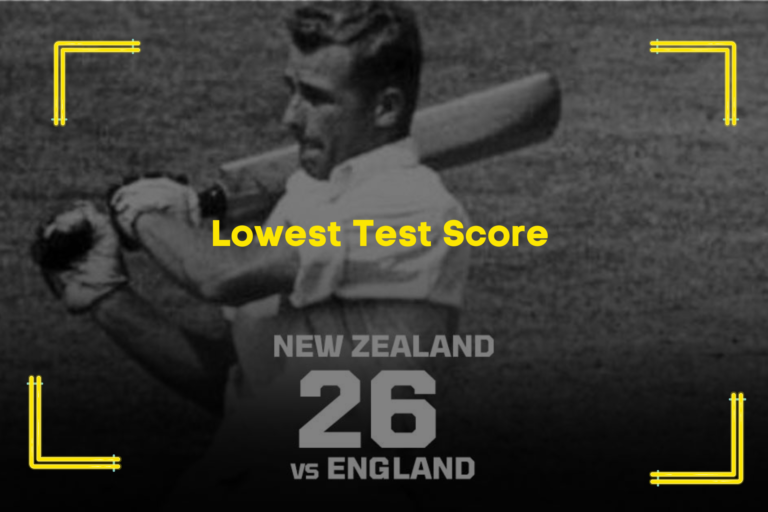Highest Average In Test – Test Records | Highest Innings

Test cricket, the longest format of the game, is often regarded as the true test of a player’s skill and temperament. One of the most crucial statistics in test cricket is the batting average, which is the total number of runs scored by a batsman divided by the number of times he has been dismissed. In this article, we will explore the significance of having the highest average in test cricket, discuss the most average in test performances, and delve into the factors that contribute to achieving such a feat. YourIPLNews provides such great information and records about the cricket world, so learn more about the highest run chase in test and the highest partnership in test.
Importance of Batting Average in Test Cricket
Measuring a Batsman’s Consistency – The batting average is a key indicator of a batsman’s consistency and reliability in the longest format of the game. The highest average in test suggests that a player is not only capable of scoring big runs but also does so consistently, making him an invaluable asset to his team.
Comparing Players Across Generations – Batting averages also allow cricket enthusiasts and analysts to compare players from different eras, providing a benchmark to evaluate their prowess and success in the game.
Top 5 Players with the highest average in test Cricket
| Rank | Player | Batting Average |
|---|---|---|
| 1 | Sir Donald Bradman | 99.94 |
| 2 | Steve Smith | 60+ |
| 3 | Marnus Labuschagne | 60+ |
| 4 | Virat Kohli | 50+ |
| 5 | Kane Williamson | 50+ |

Don Bradman highest average in test cricket
Sir Donald Bradman, widely regarded as the greatest batsman of all time, boasts an unrivaled batting average of 99.94. This astonishing figure places him far ahead of any other player in test cricket history, making him the gold standard for batting excellence.
Steve Smith most average in test
Australian batsman Steve Smith is another prominent name when it comes to the highest batting average in test cricket. With a batting average of over 60, Smith has proven his mettle as a consistent run-scorer in the longest format of the game.
Marnus Labuschagne’s highest average in test cricket
Another Australian on the list, Marnus Labuschagne, has quickly established himself as a reliable test batsman. With an impressive average of over 60, he has cemented his place as one of the most average in test.
Virat Kohli most average in test
Indian cricketing icon Virat Kohli has consistently maintained a high batting average throughout his test career. With an average of over 50, Kohli has proven his consistency and ability to perform at the highest level, making him one of the top run-scorers in test cricket.
Kane Williamson most average in test
New Zealand captain Kane Williamson is another player with a remarkable batting average in test cricket. With an average hovering around 50, Williamson has demonstrated his prowess as a consistent and dependable batsman in the longest format of the game.
Factors Contributing to a High Batting Average
- Technique and Talent
A strong technical foundation and natural talent play a crucial role in achieving a high batting average. Batsmen with solid techniques and exceptional skills are more likely to score consistently and maintain high averages.
- Mental Strength and Concentration
Mental strength and the ability to maintain concentration for extended periods are essential for success in cricket. Batsmen who can keep their focus and make sound decisions under pressure are more likely to maintain high batting averages.
- Adaptability and Versatility
Adapting to different pitch conditions, weather, and opposition bowling attacks is vital for achieving a high batting average in test cricket. Batsmen who can adjust their techniques and game plans based on the situation are more likely to succeed consistently.
- Playing Conditions and Opposition Quality
A player’s batting average can be influenced by the quality of the opposition and playing conditions. Batsmen who face top-quality bowling attacks and challenging conditions yet maintain high averages showcase their extraordinary abilities.
The Evolution of Test Cricket and Batting Averages
- Changes in Batting Techniques
Over the years, batting techniques have evolved, with modern-day players employing a more aggressive and dynamic approach. This shift in mindset has led to higher run-rates and potentially higher batting averages.
- Impact of T20 Cricket
The advent of T20 cricket has also influenced cricket, with players now more willing to take risks and play attacking shots. This change in approach can sometimes result in higher batting averages, as batsmen accumulate runs more quickly.
- Role of Technology in Modern Cricket
Technology has played a significant role in the evolution of cricket, with advancements in training methods, analytics, and equipment contributing to improved batting performances. As a result, modern-day players may enjoy higher batting averages than their predecessors.
Who holds the record for the highest average in test cricket?
Sir Donald Bradman holds the record for the highest batting average in test cricket, with an astonishing average of 99.94.
Why is batting average important in test cricket?
Batting average is a crucial statistic in cricket, as it measures a player’s consistency and ability to score runs over an extended period.
How has the evolution of cricket affected batting averages?
Changes in batting techniques, the impact of T20 cricket, and advancements in technology have influenced batting averages over time. These factors have contributed to the evolution of cricket, potentially leading to higher run-rates and improved batting performances, which can result in higher batting averages for modern-day players compared to their predecessors.
The conclusion most average in test
The highest average in test cricket is a testament to a batsman’s skill, consistency, and adaptability. While the likes of Don Bradman, Steve Smith, Marnus Labuschagne, Virat Kohli, and Kane Williamson have set the benchmark for batting excellence, numerous factors contribute to achieving and maintaining a high batting average. As cricket continues to evolve, it will be intriguing to see how future generations of batsmen fare in the pursuit of the highest batting averages.
The batting average is calculated by dividing the total number of runs scored by a batsman by the number of times he has been dismissed.
Factors such as technique, talent, mental strength, concentration, adaptability, versatility, playing conditions, and opposition quality contribute to achieving a high batting average in test cricket.






